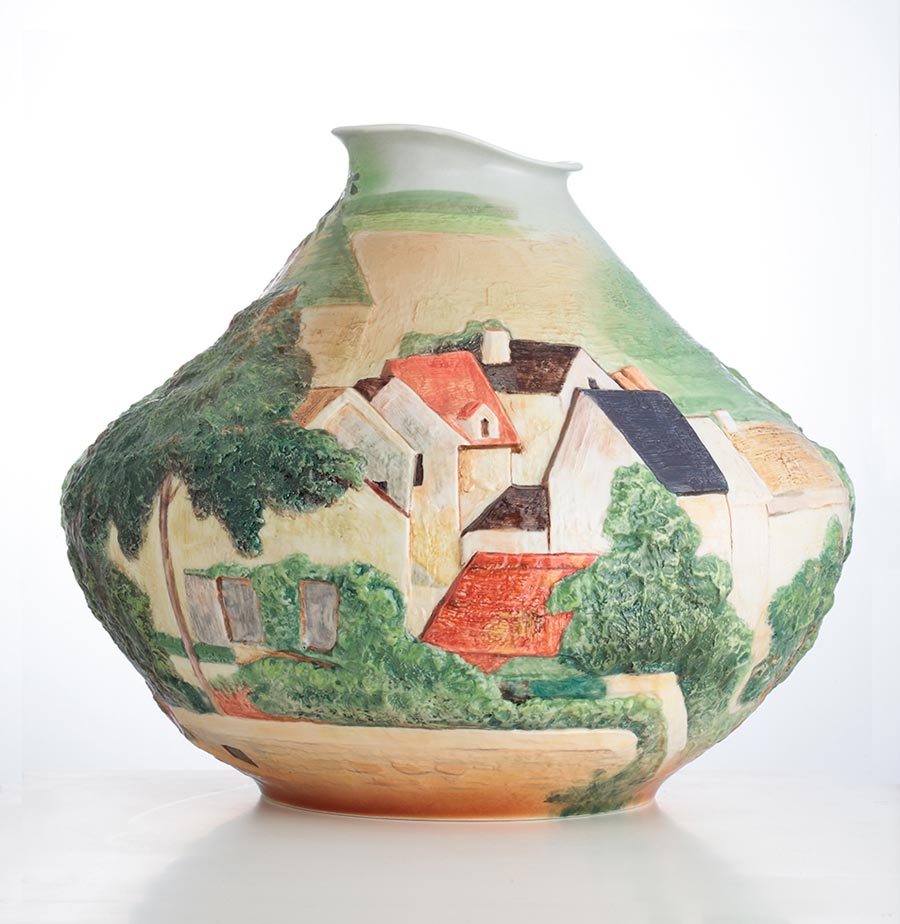Classic Paitings
Philadelphia Museum of Art Collection

•Landscape at Auvers FZ02679
Picturesque and Tranquil Scenery
The “Landscape at Auvers” vase draws its inspiration
from Paul Cézanne’s painting “Quartier Four, Auvers-sur-
Oise (Landscape, Auvers), 1873”. In 1873, Cézanne, the
father of modern art, experimented with new methods of
representing the natural world, delineating structures in
the landscape with broad planes of color and rendering
the village of Auvers, seen over an ocher wall, in dense,
angular brushstrokes of solid color. The “Landscape at
Auvers” vase features an undulating opening (mouth) and
soft, delicate lines, with layers of color stacking up in flat,
solid brushstrokes to portray a beautiful, animated village
scene in brilliant colors.
Henri-Julien-Félix Rousseau was a self-taught artist, who
lacked formal training in painting and did not exhibit his
works at independent salons until the age of 42. In his
painting “Landscape with Cattle, 1885 ~1900”, Rousseau
enlarged the cattle with disregard for conventional
perspective, creatively demonstrating a new painting
style as a result. Franz designers feature the cattle in this
painting – with them delicately sculptured on the vase in
a three-dimensional way together with the clearly painted
serene village scene in the original; this porcelain piece
shows a village landscape with green grass.










